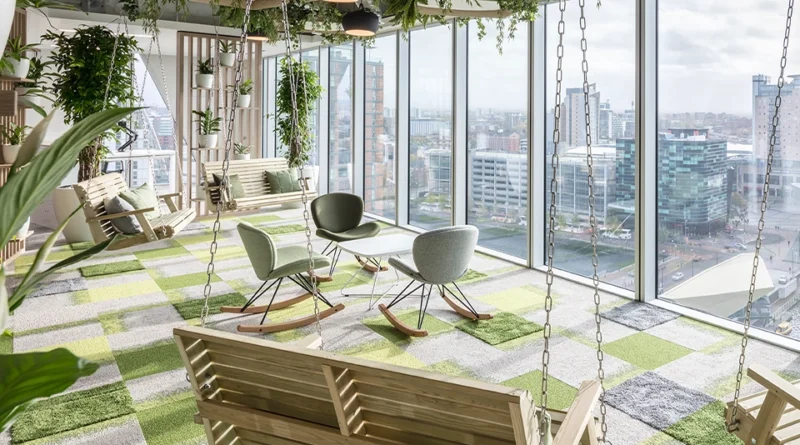Top 10 Modern Shopfront Window Designs for Retail Spaces
The shopfront window would be one of the most important elements of your retail store. It acts as the gateway into the brand. Moreover, you can use it to create a perfect first impression on the customers who pass by.
However, modern retail shopfront window designs move away from traditional glass box windows to creative and interactive installations. The main reason to switch to this design is to grab attention. With proper designing, you will be able to entice customers inside and even communicate the essence of your brand.
In this article, we explore 10 of the most innovative and modern retail shopfront window display designs that bring creativity into the streetscape.
From interactive technology to artistic visual merchandising, these shopfronts showcase unique styles that engage customers in memorable ways.
Sculptural Artistic Displays
Artistic, sculptural window displays are growing in popularity for their ability to catch eyes and convey artistic themes. Luxury brands like Dior, Chanel and Prada have unveiled unique window designs featuring mannequins, props and fixtures arranged in creative, sculpture-like compositions. These artistic shopfronts play with shapes, textures, colors and lighting to highlight seasonal collections in visually aesthetic ways. The sculptural quality and visual drama draw attention and interest into the store interior.
Digital/Interactive Experiences
Leading retailers are integrating digital interactivity and emerging tech into physical storefront windows through touch screens, 3D holographic displays and augmented reality. Brands can showcase products in innovative ways while enabling customers to digitally browse and engage further with content or games. Interactive shopfronts bring excitement and allow for rotating, seasonal displays at lower costs versus full makeovers. Warm lighting and strategic audio can enhance customer experience. Interactive windows align well with young, tech-savvy demographics.
Fluid/Minimalist Designs
Sleek, streamlined storefronts with fluid lines, ample glass and minimalist fixtures keep sightlines open while maintaining a modern sophistication. High transparency and simplistic metal frames allow the shop interior and displayed products to take focus rather than attract with loud decoration. Luxury fashion labels often favor minimalist shopfronts and boutiques for an airy, contemporary feel. Placement of lighting and shelving should accentuate merchandise. The simplicity evokes quality craftsmanship and gives a refined, gallery-esque effect.
Natural Themes & Materials
Natural textures, reclaimed woods, living plants and greenery are being welcomed into modern retail exterior window designs for organic appeal. Brands like Half Acre and Hornbach have embraced biophilic shopfront styles with vertically-planted walls and natural materials that exude life. The modern sustainable storefront offers a respite from urban hardness while harmonizing indoors with outdoors. Costa Coffee features a nice mix of wood, corten steel and greenery for a modern yet natural facade. The organic themes speak to eco-conscious consumers.
Experimental Display Fixtures
Retailers aim to inspire and excite by using their windows to showcase experimental, avant-garde display fixtures rather than safe designs. This includes mannequins crafted into orb shapes, shattered shards or neon structures to exhibit products with artistic drama. Experimental lighting like neon tubes, bare filament bulbs and holographic projections further enable displays to adopt new visual narratives versus dated tropes. Experimental shopfront windows intrigue passersby and refresh brand perception among younger crowds.
Localized Storefront Designs
Customized storefront windows that reflect hyper-local architectural details, historical references or other community-relevant elements can better immerse retail into the existing built environment. Tailoring aspects like framing, signage fonts or artistic displays to match surrounding context helps modern shops enhance facades while showing devotion to the locality. Customization also offers branding differentiation from competing chains. Local collaborations similarly infuse authentic character that cannot be mimicked uniformly. Site-specific storefronts ultimately forge deeper connections to customers.
Bold Textural Features
Distinct textures add visual energy and three-dimensional depth better than flat glass bases alone. Retail shopfront designers incorporate corten steel panels, layered translucent films, woven metalwork and other textural finishes to deliver a tactile dynamism lacking on generic facades. Textural filters similarly diffuse or fracture interior lighting projections for added drama versus uniform illumination. Consider bolder textural wall cladding, light films, metalwork, wooden facades or smart glass technology to amplify window design.
Blurred Storefront Boundaries
To appear more inviting and integrated with surroundings, modern retail aims to “blur the lines” between indoors and outdoors instead of rigid boundaries. Designs may feature foldaway glass doors, near-seamless entryways or window displays merged with exterior landscaping. Outdoor resting nooks, benches and visual continuity with paving materials also promote fluid access and better customer journey between spaces. With barriers diminished, interiors and products become more tangible upfront rather than separated behind strict confines.
S asymmetry & Non-Rectilinear Forms
Conventional rectangular glass facades look increasingly outdated and homogeneous for retailers seeking differentiation. Architects instead design asymmetric, irregular window contours that capture attention with more organic dynamism and movement. Non-orthogonal angles, rounded edges, triangular framing and offset placements promote modern asymmetry. Sinusoidal glass patterns and curved metallic facades offer additional ways to break from stiff boxes. Asymmetry intrigues curiosity and imparts retail originality.
Creativity Over Conformity
Retail brands finally have opportunity to break out from beige uniformity thanks to shifting mindsets and improved design flexibility. Rather than conforming to assumed notions of tradition or convention, leading retailers think freely when designing an imaginative, one-of-a-kind storefront suited uniquely for the brand ethos and locale. Possibilities are boundless. Consistency across locations can still occur internally through distinctive yet customized window designs. Creative bespoke storefronts help small retailers differentiate from competitors. Authenticity resonates today over conformity.
Final Words
Retail shopfront design continues advancing beyond boring all-glass facades to immerse consumers in more compelling, interactive brand experiences. Window curation is integral for introducing customers to merchandise while conveying brand qualities. Creative locales make purchasing more pleasurable and memorable. The shopfront ultimately frames the brand narrative.
Modern retailers thus consider more artistic, asymmetric, digitally integrated local storefront designs that capture consumer imagination and dollars. Unique storefront window styles engage customers as inspiration to then explore the brand’s interior world. The psychology of first impressions reigns.




